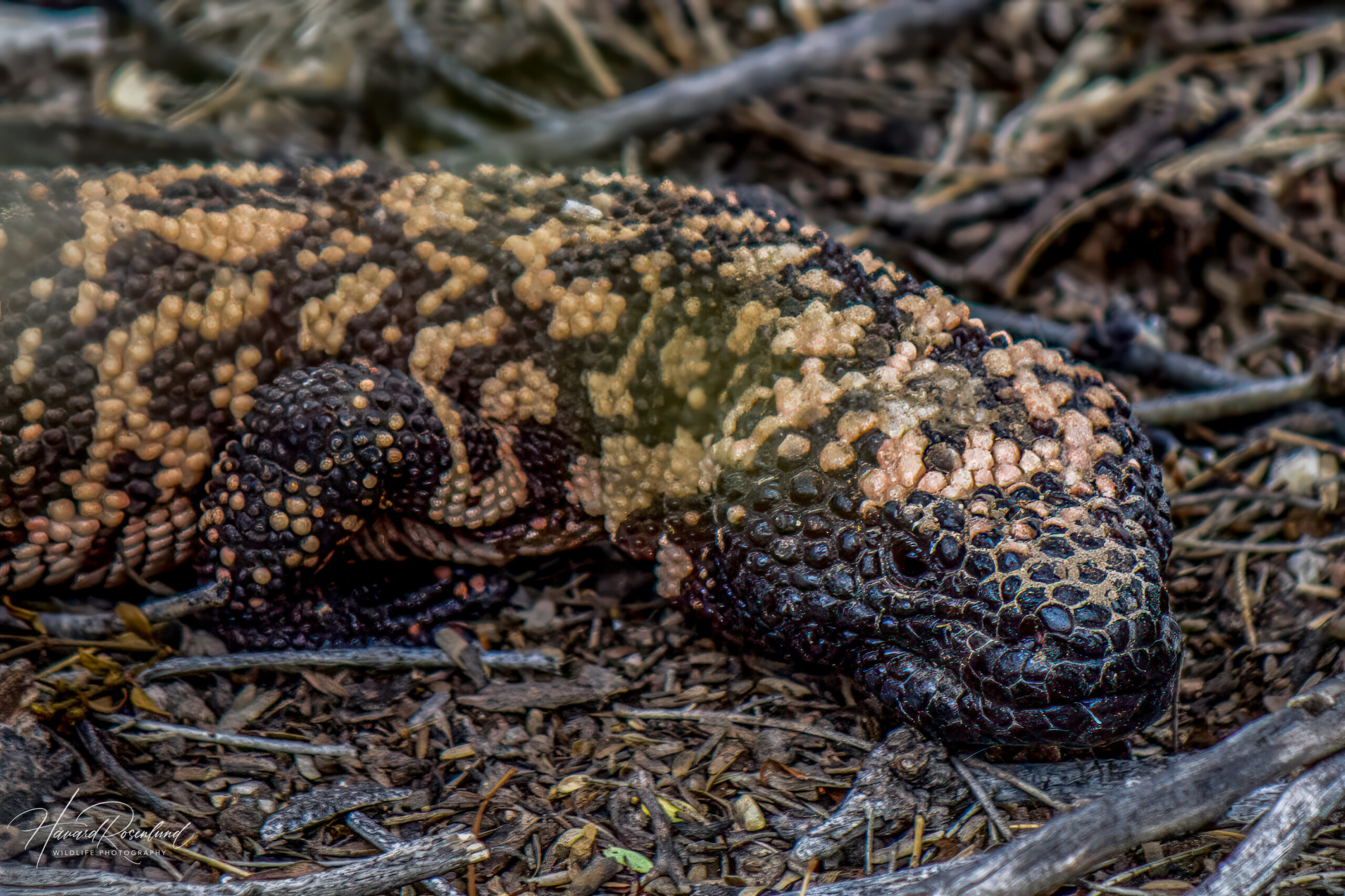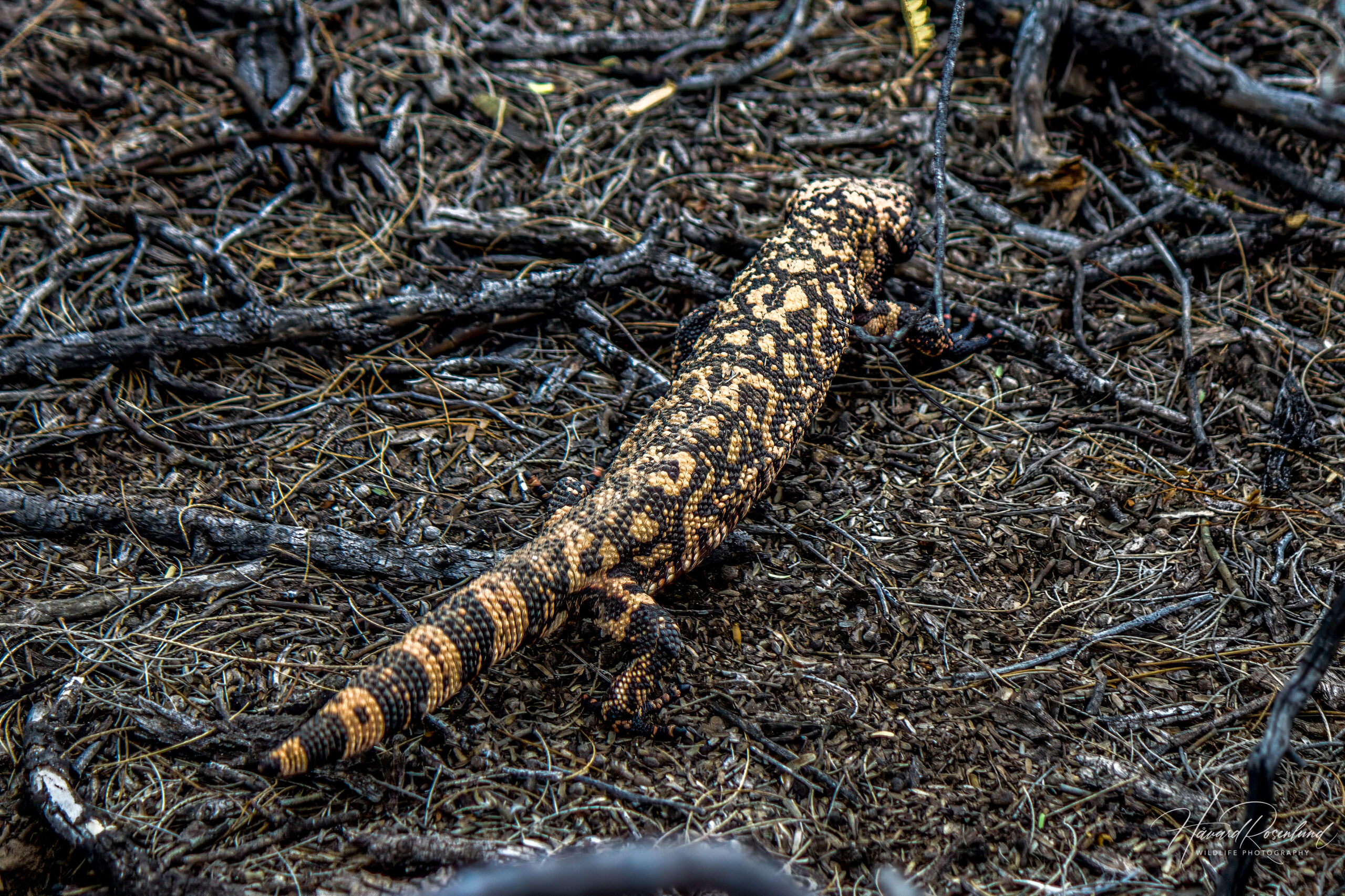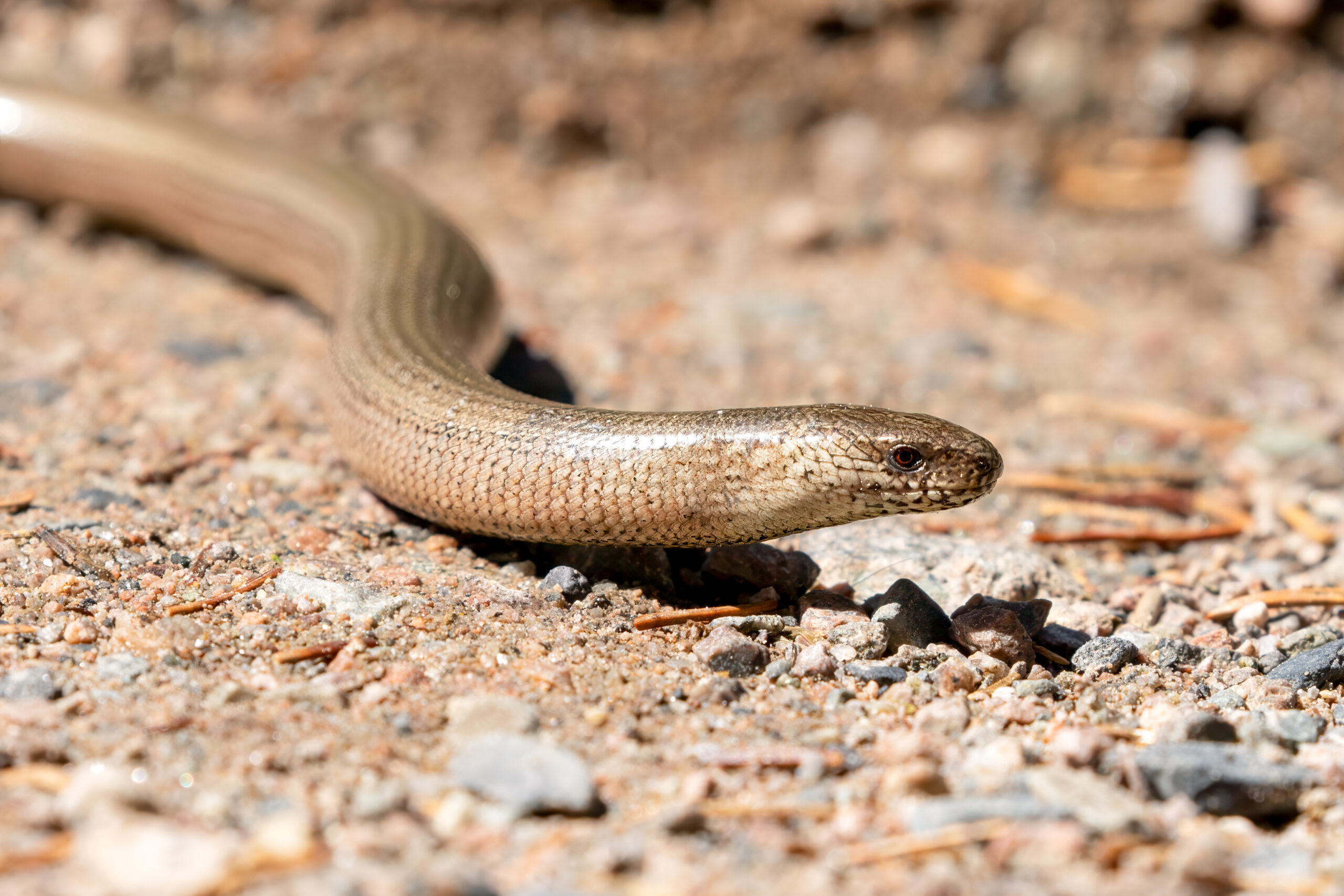Description
The Gila monster (Heloderma suspectum) is one of only two venomous lizards found in North America. The other being the closely related beaded lizard (Heloderma horridum) found in Mexico. This sluggish and slow lizard is easy to recognize with the black and yellow pattern covering its body. Such coloration is often a sharp indicator that it would be a good idea for predators to keep away. Even though the venom it injects is painful enough to deter its enemies, it is not strong enough kill an adult human. The Gila monster is the largest lizard in the United States, with lengths reaching 51-56 cm (20-22 in) for large individuals, and a weight averaging between 350-700 g (0.77-1.54 lb.). Some individuals have been measured up to 2.3 kg (5.1 lb.).
Habitat & behavior
Gila monsters are typically found in semi-deserts, scrublands, and woodlands, where it lives 90 % of the time underground in various shelters and burrows. It is dependent on water and will often stay close to sources of moisture and water. It hibernates in the coldest winter months, from November to January or February. Although it is very rare to see a Gila monster, they can be seen active in the very early mornings during spring and early summer. They can sometimes be found outside their burrows just after summer rains, as they often seek out puddles to cool down in. After heavy rains, such as during the monsoon season, their hideouts and burrows might become flooded, forcing them above ground.
Diet & feeding habits
The Gila monster is a carnivore, eating small mammals, lizards, birds, frogs, and insects. It will also eat carrion. Small prey species are swallowed whole, while larger prey are crushed. Its most important source of food, however, is eggs from birds and other reptiles. It will sometimes climb trees and cacti to get to the eggs. Eggs burrowed in the ground are located through its strong sense of smell. Because most of its life is spent still in burrows and shelters, it does not need to eat often, and can do with eating only 5-10 times a year. When it does eat, it can eat up to one-third of its own weight. Venom is not used for hunting and is most likely used for defense only.
Reproduction
The Gila monsters mate in late spring and early summer. Even though not much is known about their social behavior, males do seem to fight over dominance, and the winners are thought to mate with more females than other males. When a male finds a receptive female, he will try to court her by flicking his tongue towards her, while he at the same time picks up her scent. She might reject him, which often ends with her biting him before moving off. If she accepts him, copulation might last from 15 minutes to two and a half hours.
In July or August, the female lays 2-12 eggs (with 5 being the average) in a shallow depression in the ground. After they are laid, she will cover them with sand until they are approximately 13 cm (5 in) below the surface. The incubation time lasts as long as nine months, and the eggs hatch between April and June the following year. Young Gila monsters are 16 cm (6.3 in) when they hatch, and are capable of injecting venom from the start. They can live up to 20 years in the wild, and 30 years in captivity.
Venom
Unlike snakes, the Gila monsters and other beaded lizards produce their venom in glands in their lower jaw. To inject venom the Gila monster has to chew rather than bite. This is one of the reasons why Gila monsters often won’t let go when biting for defensive purposes. The teeth break easily but will keep growing back throughout their lives. The venom itself is highly toxic, but the amount it produces is so low it does not pose any real danger to adult humans. If one is bitten, one first have to remove the lizard itself, which can be done by fully submerging it under water until it lets go. Symptoms are excruciating pain, edema, and a rapid drop in blood pressure. Scientists have managed to isolate several chemical compounds from the Gila monster venom, and one has led to an effective treatment of type 2 diabetes. Another compound might be helpful in the treatment of patients with Alzheimer’s disease.
Status
The Gila monster is in significant decline across its entire range due to habitat loss. It has never been an abundant species and population densities varies between areas. Although it is very seldom seen, in some areas, like Arizona, it is neither uncommon nor rare. It listed as near threatened on the IUCN Red List.
Besides habitat loss due to urbanization and agriculture, especially in Mexico, it is also threatened by the increase in vehicle traffic and road development. Many populations have also suffered from commercial and private collectors who illegally catch them in the wild.








